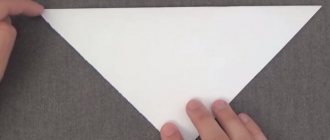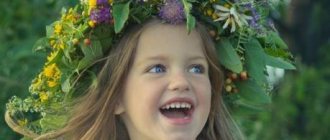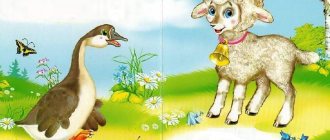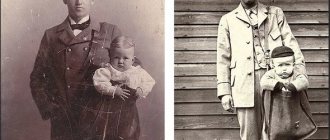master class for teachers “Origami Theater” material
Master class summary for teachers
on the topic: “Origami Theater”
Master class: “Origami Theater”.
Participants: kindergarten teachers.
Purpose of the master class:
- increasing the competence of teachers in the use of theatrical activities in kindergarten,
- teaching the simplest techniques of folding paper figures and creating a theater for children.
- development of imagination and creative abilities.
Master class objectives:
- encourage the widespread use of theatrical activities in kindergarten;
- to interest colleagues in origami as a form of arts and crafts;
- teach teachers how to make theatrical puppets based on the origami “cup” model;
- attract the attention of teachers to the theatrical game.
Required material:
- a set of multi-colored paper;
- markers;
- a simple pencil;
- glue;
- scissors.
Master class plan:
- a story about the importance of origami theater for the development of children;
- demonstration of ready-made fairy-tale origami “heroes”;
- demonstration of techniques for constructing origami figures using a presentation;
- mini-performance with origami figures performed by teachers.
Today we have gathered for a master class called “Do-It-Yourself Origami Theatre.”
What is origami? It is the making of colorful paper crafts using repeated folding and bending techniques. Origami attracts not only children, but also adults.
Since ancient times, Japanese wisdom says: “The Great Square has no limits.” Try to fold a simple figure, and you will instantly be captivated by an interesting task.
Why theater using origami technique? Because it can be easily and simply created with your own hands, using available material - paper; dolls do not take up much storage space.
Staging performances with homemade characters-actors will not only entertain the child, but also benefit:
- improve constructive skills (bending, repeated folding, cutting, gluing, etc.);
- develop imagination and creativity;
- to form in children a strong interest in theatrical activities and a desire to participate in the general action;
- encourage children to actively interact and communicate, teaches them to be able to communicate with peers and adults in various situations, develop speech and the ability to actively build dialogue;
- develop playful behavior, aesthetic feelings, and the ability to be creative in any task.
With the help of origami dolls, you can perform simple speech skits or entire performances.
Origami dolls are a great opportunity not only to practice origami techniques, but also to create your favorite characters.
The figures of such a homemade theater open up to children the wonderful world of a fairy tale, the author of which is themselves.
Characters for the origami theater can be made in different ways. (demonstration of ready-made fairy-tale characters made in different ways using the origami technique)
Today I invite you to make fairy tale characters based on the origami model - “Glass”.
This theater can be used in different ways: as a tabletop, finger, on sticks, on palms, on magnets.
Using this method, you can easily make origami dolls together with your children.
In addition, handmade toys will bring children a lot of pleasure, because so much work has been put into them!
A theater based on an origami “cup” can be made for any fairy tale read in a group and acted out during reading. Everything turns out to be fun and interesting, and most importantly, very exciting for children.
To create a theater we will need the following tools and materials:
- colored paper;
- a simple pencil;
- scissors;
- glue;
- markers.
(demonstration of production stages using a presentation, direct production of fairy-tale characters).
Mini-performance with origami figures performed by teachers.
I want to end our meeting with these words: “Origami, origami is a world of fantasy and magic! This is joy, this is a fairy tale, this childhood is with us forever!”
Thank you for your attention!
Master class “Creating origami with the whole family”
#Federal State Educational Standards #Methodological developments #Master class #Educator #Preschool education
Master class “Creating origami with the whole family” MKDOU CRR – kindergarten No. 501 “Bear Cub”, Novosibirsk
Educational programs of Preschool Educational Institution No. 501: Program “ON THE ROAD TO SCHOOL” for the high-quality implementation of the educational field “Social and communicative development”. The program “TRAVEL TO THE SAND COUNTRY” for the high-quality implementation of the educational field “Social and communicative development”. LIVING ECOLOGY program. Formation of the foundations of “Ecological culture of preschool children”. Program “I WANT TO BE HEALTHY!” for the high-quality implementation of the educational field “Physical Development”. The program “DEVELOPMENT OF CREATIVE ABILITIES OF SENIOR PRESCHOOL CHILDREN BY MEANS OF ORIGAMI” for the high-quality implementation of the educational field “Artistic and Aesthetic Development”.
Activities for the implementation of the program: Event Deadline Master class for parents and pupils “Creating origami with the whole family” November Master class for parents and pupils “Making a tabletop origami theater” March Open viewing of joint activities with children as part of the implementation of the program “Development of creative abilities” senior preschoolers using origami" April Vernissage "Origami Universe" April
Why do you need origami? develops in children the ability to work with their hands under the control of consciousness, their fine motor skills, precise finger movements are improved, and the eye develops. promotes concentration, as it forces you to focus on the manufacturing process in order to get the desired result. is of great importance in the development of children’s constructive thinking, their creative imagination, and artistic taste. It also stimulates the development of memory, since in order for a child to make a craft, he must remember the sequence of its manufacture, techniques and methods of folding. activates thought processes. During the construction process, the child needs to correlate visual symbols (showing folding techniques) with verbal ones (explaining folding techniques) and translating their meaning into practical activities (independent execution of actions). improves the child’s labor skills and creates a work culture. contributes to the creation of game situations. Having folded animal masks out of paper, children engage in a dramatization game based on a familiar fairy tale, become fairy-tale heroes, travel to the world of flowers, etc.
The history of origami Good evening, dear parents and children. I invite you to the Land of the Rising Sun - Japan, to get to know its culture and the art of origami better. “What do you know about Japan? » Japan lies on the islands located east of the Pacific coast of Asia, in the country where the sun rises. Therefore, it has long been called the Land of the Rising Sun.
The history of origami The life of the Japanese is very different from the European one. Japanese houses have little furniture; the entire floor is covered with mats made of rice straw. People walk on them in socks, shoes are left on the doorstep. They sit on the floor when they dine, on the floor and sleep, laying out mattresses, or rather, wicker floor mats - tatami, so the floor is perfectly clean.
The history of origami Japanese art is also unique: painting, puppet theater. The Japanese are famous for their ability to arrange flower bouquets.
The history of origami
History of origami Noh Theater The Noh Theater originated in the 14th century during the time of the famous samurai Tokugawa. So traditionally it became a genre of samurai, rulers and aristocratic persons. Its highlight is the special masks and national kimono costumes that the actors wear. The mask does not correspond to a specific character - it is used to express feelings, emotions, mood, so one actor can wear several masks in turn. Both masks and costumes are passed on from senior actors to junior ones within the theater.
The history of origami Japanese wisdom says: “Look at the familiar and you will see the unexpected, look at the ugly and you will see the beautiful.” There is another type of Japanese art - origami. Origami got its name from the Japanese words “ORI” - fold and “GAMI” - paper. The main material used for work is paper. The art of paper folding dates back 2,000 years.
The history of origami No one can definitely say where and when this art arose. Scientists believe that it appeared first in China. Since paper was first invented in Ancient China. However, there is no evidence that this type of art was further developed in China. Origami developed and played a special role in Japan, which is why it is believed that this country is the true “homeland” of paper figures. The origin of origami dates back to the 7th century AD, when the secret recipe for making paper and ink was brought from China to Japan by the Buddhist monk Dan Ho. It was he who taught the Japanese monks to make graceful figures. Figurines were used in rituals, for example, images of a butterfly were used in wedding ceremonies, ribbons were used in funeral processions. Particular attention was paid to origami letters, which represented a written message. Figures were made from such a letter, and only a person who could correctly unfold the letter could read it. In the 20th – 21st centuries, Akira Yoshizawa invented the “alphabet”, which is represented by a series of pictures and diagrams. Following the diagram, you can make your own images from paper.
Let's create origami with the whole family Guys, as you already know, an origami figure is obtained from the original shape of a sheet - a square. With the help of bending, folding, trimming, it acquires various basic shapes. Step by step, following the diagram, an origami figure is born.
And now, on the eve of Mother’s Day, I suggest you design a tulip flower using the origami technique and decorate it in a beautiful greeting card. Colored paper, cardboard, glue are placed on the tables. Creative success to you! Let's create origami with the whole family
Photos from the event
PHOTO from the event
PHOTO from the event
Origami in kindergarten
As already mentioned, origami is the art of creating various figures from paper. Thanks to the many different images conveyed using an ordinary sheet of paper, this direction of creativity is known throughout the world. In addition to the fact that this type of crafts has become a kind of hobby for many people, it is also included in the additional education program in preschool educational institutions. Studying the art of origami in a preschool educational institution is a wonderful method for developing intellectual and creative abilities in children.
Origami is not only a way to have an interesting pastime. Regular practice of this unusual type of creativity develops a lot of useful qualities and has a beneficial effect on thinking and intellectual development.
Video selection of simple origami for children
Goals and objectives of origami classes for preschoolers:
- Creative skills. Origami combines two types of brain activity: imagination and logic. This unique mind game harmonizes the hemispheres of the brain and activates the ability to find fresh ideas and create something new.
- Attentiveness. When creating any piece of paper, even a simple one, a strict sequence of actions is required. Therefore, origami in kindergarten is one of the most useful methods for developing attention in children.
- Concentration and perseverance. Before the age of 6, many children find it quite difficult to maintain attention on one object for a long time. The only way to develop perseverance and concentration is to find an interesting activity for the child that can completely absorb his attention.
- Beneficial effects on mental health. Doing these types of arts or crafts reduces anxiety levels. In addition to origami, there are a number of similar activities: plasticine modeling, bead weaving or embroidery. However, unlike paper crafts, working with a needle or small beads can be dangerous for a small child. Therefore, origami for preschoolers is an ideal option.
- Memory. Folding paper figures usually takes place in several stages. Due to the fact that children have to remember and reproduce the entire sequence of actions, memory develops.
- Development of aesthetic taste. The foundations of the concept of beauty and the sense of beauty are laid at an early age. It is very important at this stage of development not to miss the moment and to instill in children an aesthetic taste.
- Spatial thinking. Starting to master spatial geometry will help develop your imagination. In addition, some teachers believe that origami for preschoolers is a good help for further study of mathematical disciplines.
- Fine hand motor skills. The skill of folding paper requires precise and careful hand movements, since the correct folds determine how smooth and high-quality the paper work will be. In the future, this skill will help you more easily master various areas that also require finger dexterity. For example, playing musical instruments, drawing, various types of needlework, such as knitting, embroidery, beading. In addition, psychological research has revealed a direct connection between the development of fine motor skills of the hands and speech. Regular practice, which requires a subtle approach and precise, gentle finger movements, helps develop diction and articulation. Therefore, circle work in a preschool educational institution on origami will be very useful. Especially in speech therapy kindergartens.
How to make origami crafts with children
The child will not be able to start practicing paper origami on his own; here he needs help and clear guidance from an adult (parent or teacher). Children love to study with adults; this helps them bond. You should start with the simplest figures that can be completed in one approach.
It will be interesting to combine origami classes with other forms of art. For example, a child will paint a finished figurine with great interest. It is interesting to decorate the figurine with applique, glue beady eyes or a fluffy tail to the animal. You can even create a three-dimensional applique by gluing beautiful flowers onto whatman paper.
At the initial stages, you can interest the young researcher by telling a fairy tale during the lesson. Any adult can easily come up with a story, for example, “The Tale of a Piece of Paper,” “The Tale of a Frog” (bear, bunny, bird), etc. You should start from the topic of the lesson.
Older children can diversify their activities with paper with stories about its origin, ancient China and Japan, and modern paper production technology.
When putting together animal figures, you should at the same time talk about their habitat, nutrition, and appearance, expanding the child’s erudition. When enough paper figures have accumulated, you can organize a theatrical performance. For the baby, this will be a real adventure with a storm of positive emotions.
During paper origami classes, an adult should behave patiently and try to interest the child. If something doesn’t work out for the child the first time, if the folds are not straight and the figures are crooked, the adult is still obliged to praise the craft and the creator, making him want to continue doing it.
The duration of the lesson should not exceed half an hour; if the child is tired, you can entertain him with finger exercises.
Below are the simplest origami for children. This is where you can begin to immerse your child in the fascinating world of origami.
Easy paper origami - “Dog”
Scheme
Video
Others similar in manufacture
Puppy
Chanterelle
Koala
Kitty
Baby elephant
Origami for children “Frog - Jump”
Scheme
Video
Two more versions of origami step by step “Mouse”
Scheme
Video
Origami from colored paper “Little Penguin” and “Emperor Penguin”
Scheme
Video
Origami theater in kindergarten
Another interesting area of creative development is the origami theater; in kindergarten, the organization of such activities will allow solving many educational and educational problems. Children can not only be spectators, but also directly participate in a theatrical production. Kids need to be given the opportunity to express themselves. By improvising, they create amazing stories. For the theater, it is advisable to select simple paper toys. The best and most understandable option for children is animals. With them, kids willingly come up with various fairy tales.
Senior group. Senior preschool age. Children 5-6 years old
Photo report on the lesson on constructing an “Apple” craft in the senior group using the origami technique
Goal: introducing preschoolers to origami , various techniques and ways of working with paper . Objectives: - develop creative abilities, creative imagination, development of memory, attention; — develop teamwork skills and cooperation skills; - develop…
Abstract of an OOD on designing a “Wicker Basket” from paper in the senior group Goal: Introducing children to constructive modeling activities , creating a model based on a sample. Educational objectives: • To introduce children to folk crafts, weaving baskets and other household items. • Expand and clarify children’s knowledge on the topic “Fruits and vegetables”
Educational:...








